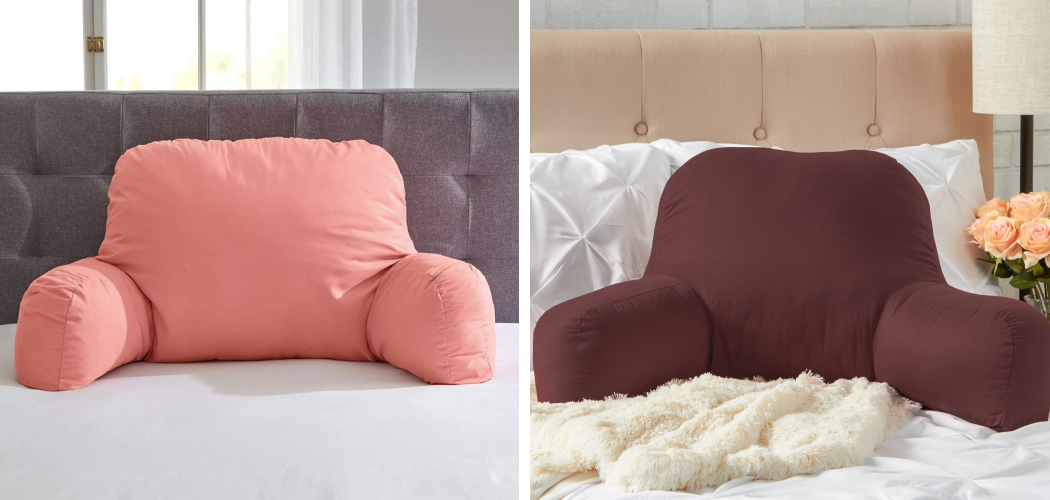Are you dealing with a dirty backrest pillow and wondering how to get it clean? If so, don’t worry – keeping your pillow looking as good as new is far easier than you may think!
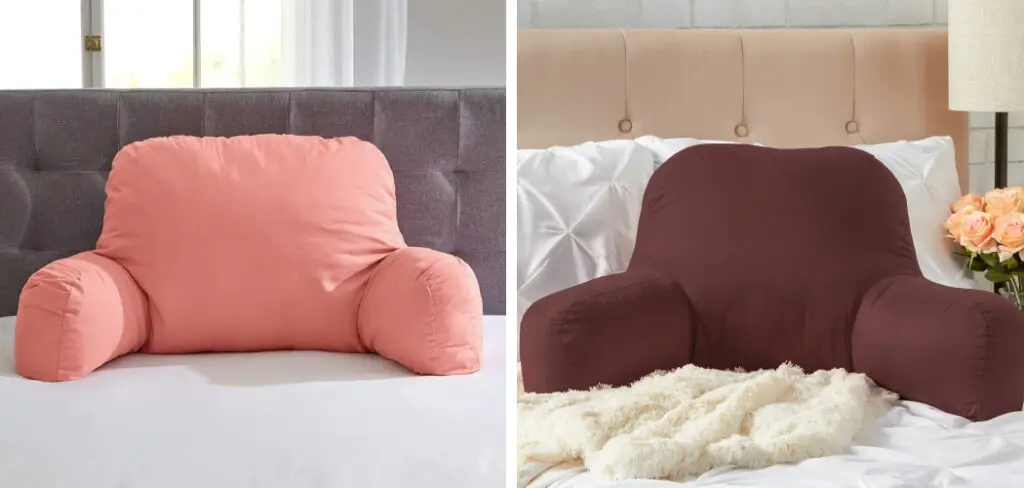
In this blog post, we’ll provide useful tips and advice on how to clean a backrest pillow, from types of fabric cleaners that should be used up to methods for drying your laundry. Whether the stains are deep-set or the dirt is unnoticeable but accumulating over time, no problem will be too big to handle once you’ve finished reading our guide!
Is There a Special Way to Wash Pillows?
Yes, there is a special way to wash pillows. Pillows should be washed on a gentle cycle with warm water and mild detergent. It’s best to avoid using bleach or fabric softener when washing pillows. After washing, make sure to dry them completely in the dryer on low heat or dry air outside in direct sunlight if possible.
Additionally, you may want to consider placing a small towel inside the pillowcase before laundering it; this will help absorb excess moisture and reduce the risk of mold growth. Taking these steps will help ensure that your backrest pillow stays clean and retains its shape for years to come!
It’s also important to remember not to overstuff the washer when cleaning pillows. Doing so can cause undue strain on your machine and may damage the pillow’s fabric or stuffing. For best results, only wash one or two pillows at a time. Additionally, you may want to consider washing them in pairs of similar sizes so as to ensure an even load for your washer.
Finally, if you’re using a top-loading washing machine with an agitator, it’s important to add the pillows after the water level has risen and the cycle has started, otherwise, there is a chance that the agitator will damage them. By taking these steps when laundering your backrest pillow, you can ensure that it stays clean and comfortable for years to come!
9 Effective Methods How to Clean a Backrest Pillow
1. Use a Lint Roller.
A lint roller is a quick and easy way to remove lint, hair, and other debris from your pillow. Simply roll the lint roller over the surface of the pillow, and it will pick up any unwanted material. Be sure to roll slowly and cover the entire area of the pillow.
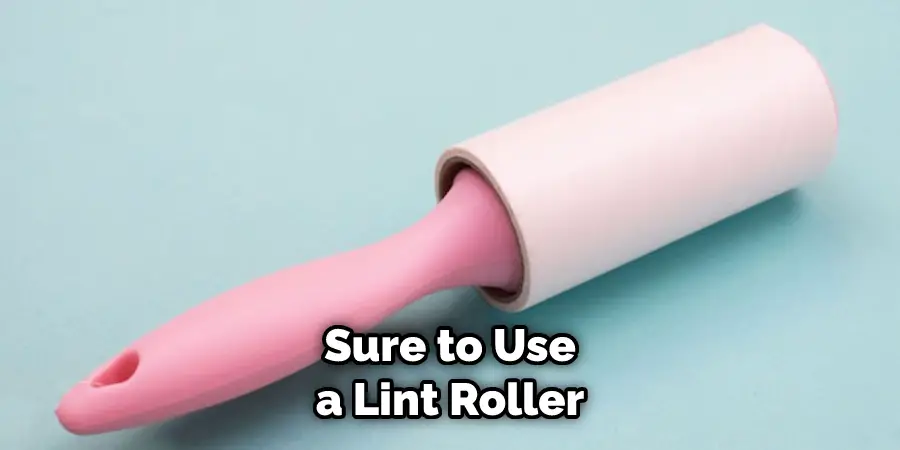
If your lint roller isn’t picking up any lint, you may need to replace it. Though lint rollers can be a bit expensive, they are definitely worth the investment. However, they will only remove surface-level debris. Make sure to use a lint roller before proceeding with any other cleaning methods.
2. Vacuum the Pillow.
Use an upholstery attachment on your vacuum cleaner to remove any loose dirt or debris from your pillow. Vacuuming regularly will help to keep your pillow clean and free of dust mites. Make sure to vacuum the inside and outside of the pillow.
You may find it helpful to use a brush attachment on your vacuum cleaner to help loosen any embedded dirt and dust. To finish up, use the crevice nozzle on your vacuum cleaner to remove dirt and dust from small areas around the seams of the pillow. While vacuuming, make sure to pay special attention to the areas around buttons and tassels.
3. Spot Clean Stains with a Mild Detergent.
If your pillow has any stains, you can spot-clean them with a mild detergent. Simply mix a small amount of detergent with water, and use a clean cloth to scrub the stained area. Rinse the area with clean water, and allow the pillow to air dry.
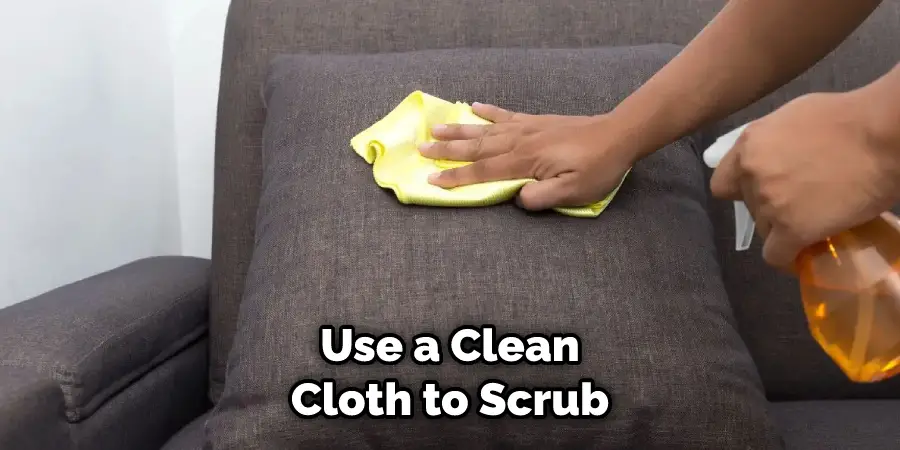
Be sure not to use too much detergent, as this could damage the fabric. If you are uncertain about what type of detergent to use, refer to the information printed on the pillow’s label. Although spot-cleaning can be successful, it may not completely remove the stain, so you may want to consider using a professional cleaning service if possible.
4. Machine Wash the Pillow Cover.
If your pillow has a removable cover, you can machine wash it in cold water on a gentle cycle. Be sure to use a mild detergent, and do not use bleach or fabric softener. Tumble dry the cover on low heat, or air dry it if possible. If the cover is not machine-washable, you can spot-clean it with a cloth dampened with warm water and mild detergent.
Be sure to check the care instructions on the tag for further information. Although the pillow filling may have been treated to resist water damage, it’s still important to avoid getting the stuffing too wet. If you accidentally get the pillow filling wet, it’s best to let it air dry completely before using.
5. Hand Wash the Pillow Cover.
If you prefer not to machine wash your pillow cover, you can hand wash it instead. Simply fill a sink or basin with cool water and add a mild detergent. Swish the cover around in the water to loosen any dirt or debris, then rinse it well with clean water.
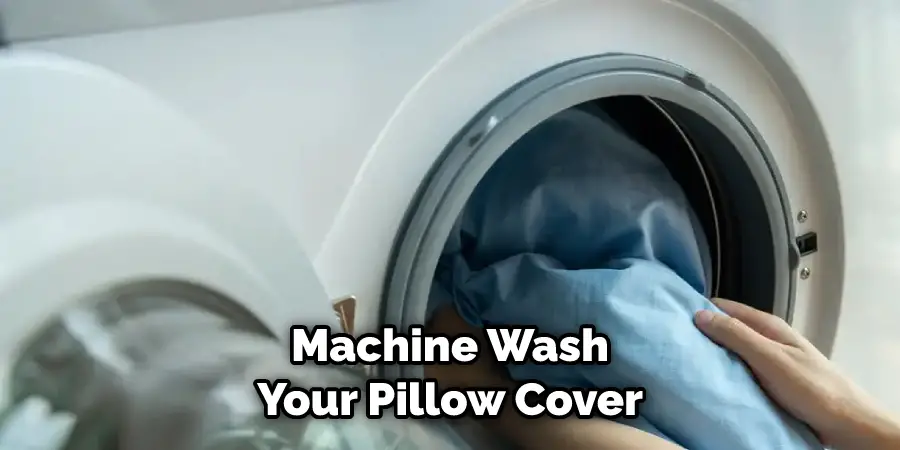
Lay the cover flat on a towel to air dry. Do not put it in the dryer, as this could cause shrinkage. For stubborn stains, pretreat with a stain remover before hand washing. Whenever possible, choose an enzymatic-based product, as it will be most effective in breaking down organic matter.
6. Allow the Pillow to Air Dry.
Allow your pillow to air dry completely before using it again. Place it in direct sunlight if possible, as the sun’s UV rays will help to kill off any remaining germs on the pillow. Depending on the material, your pillow could take up to a full day or more to dry completely.
If you need to use it sooner and have access to a clothes dryer, set it on low heat and add a few dry towels in with your pillow during the drying cycle. This will help to absorb any excess moisture and can decrease the amount of time it takes for your pillow to dry completely.
7. Fluff the Pillow.
To fluff the pillow, use your hands to reshape it and then place it in the dryer on low heat for 10 minutes. This will help return the pillow to its original shape and plushness. Be sure to check on it periodically and take it out of the dryer when it is done. If the pillow feels overly warm after drying, try air drying instead with no heat.
Once the pillow has been fluffed, you can place it back onto your chair. Enjoy the comfort of your newly cleaned and fluffed pillow! However, be sure to clean it regularly according to the instructions above in order to maintain its freshness and comfort.
8. Dry the Pillow in the Dryer.
Once your pillow is mostly dry, you can fluff it up by placing it in the dryer on low heat for around 15 minutes. This will help the feathers to relax and make it look like new again.
Make sure you check the pillow often and don’t let it overheat as this can damage the feathers. You may also want to put a few dryer sheets in at the same time to help keep it smelling fresh. Once the 15 minutes is up, your pillow should be fluffy and good as new!
9. Add a Fabric Refresher.
To keep your pillow smelling fresh, you can add a fabric refresher to the dryer during the last 10 minutes of the cycle. This will help to keep bacteria and mold away, as well as leave your pillow with a pleasant scent.
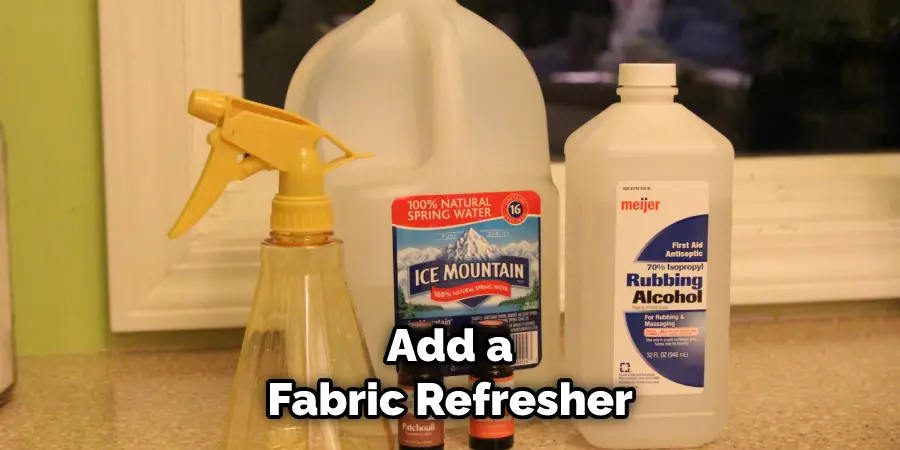
Make sure to follow the instructions on the refresher, as some may require you to add it to a cup of water before adding it to the dryer. Additionally, some refreshers may contain chemicals that can stain or damage the pillow, so make sure to do a patch test beforehand.
Things to Consider When Cleaning a Backrest Pillow
1. Material:
The type of material the backrest pillow is made of will determine the cleaning method used. For example, if the pillow is made of synthetic fibers, such as polyester or nylon, it can be washed in a machine. If the pillow is made of natural fibers, such as cotton or wool, it should be hand washed using a mild detergent.
2. Filling:
The filling of the backrest pillow will also affect how it should be cleaned. For example, if the pillow is filled with foam or feathers, it should be spot-cleaned by dabbing a cloth soaked in soapy water on the stained area. If the pillow is filled with polyester fiberfill or down, it can be machine washed.
3. Stains:
Stains should also be taken into account when cleaning a backrest pillow. If the stain is fresh, it can be treated with a pre-wash stain remover before washing. If the stain is older and set in, soaking the stained area overnight in cool water may help to lift the stain.
Conclusion
Overall, following these steps is the best way to clean a backrest pillow and maintain its comfort and support. Start by removing all lofty material and vacuuming away any loose debris. Then, wait for the surface to dry before using a regular vacuum to finish off the job. Following this method can help keep your pillow in excellent condition for many years to come.
Although it’s important to recognize that different fabrics may require special care, with proper maintenance and cleaning, you can extend the life of your favorite backrest pillow without sacrificing comfort or support. Now that you know how to clean a backrest pillow effectively, why not put your new skills into practice today?
About
Angela is the chief editor of Indoorense. She began her career as an interior designer before applying her strategic and creative passion to lifestyle and home.
She has close to 15 years of experience in creative writing and online content strategy for housekeeping and cleaning,home decorations as well as other efforts.
She loves her job and has the privilege of working with an extraordinary team. She lives with her husband, two sons, and daughter in Petersburg. When she’s not busy working she spent time with her family.

